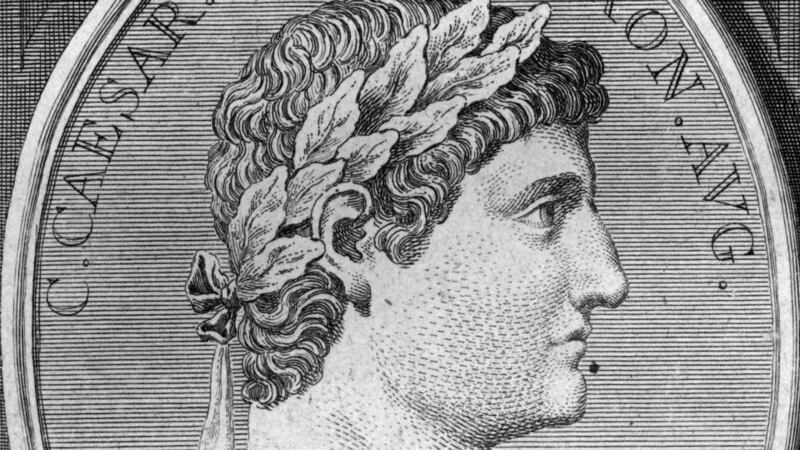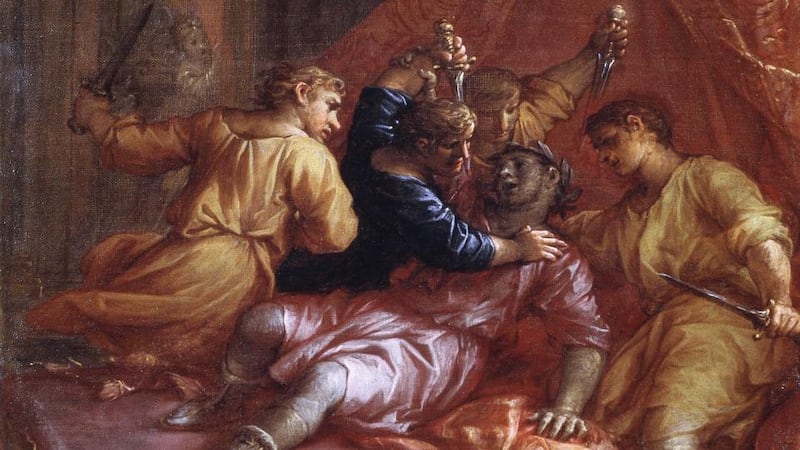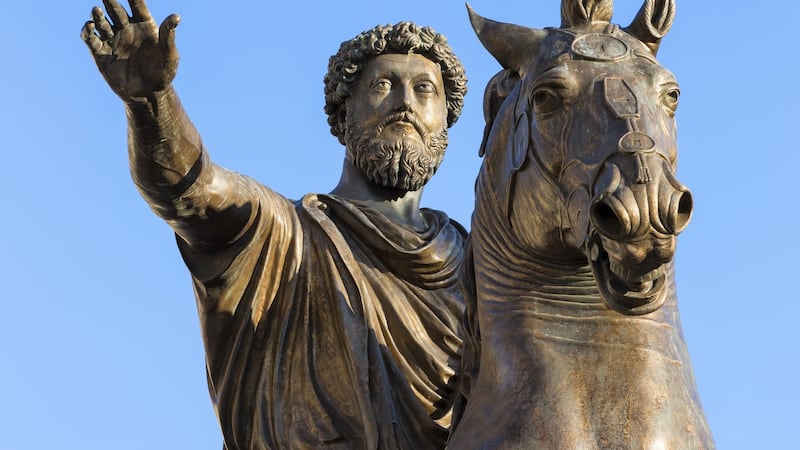If you can’t tell Nero from Caligula, if you’ve never heard of Elagabalus or Antoninus Pius, Mary Beard wants to reassure you. A lot of people living in the Roman empire didn’t know the names of their emperors either. “Most Romans in Britain didn’t know who was on the throne,” she says. “They knew an emperor was on the throne. But if you say Nero, they’d say ‘Who?’”
The Roman empire was a remarkably stable institution, and the role and indeed the iconography of the emperor remained basically the same for more than two hundred years. Beard’s fascinating new book Emperor of Rome explores the concept of “emperor”, and how that role was embodied and experienced by the men who were the emperor of Rome from Julius Caesar – assassinated in 44 BCE – to Alexander Severus, who ruled until 235 CE.
The idea for the book came from Beard’s years of teaching at Cambridge, where her students “were much more interested in emperorhood than individual emperors”. The book’s core is encapsulated in a line from the writings of Marcus Aurelius. “It was him saying, as he looks back over his predecessors, ‘Same play, different cast.’ And I usually dump on Marcus Aurelius a bit, but [in this case] I thought ‘Actually, that’s spot on, mate.’”
[ Why popes made Rome their home and shaped its historyOpens in new window ]
Viewing the reality of empire through the conceptual lens of “the emperor”, she says, “opens up all kinds of things that get buried if you’re trying constantly to pin down the specifics of a particular emperor. You start to see that the anecdotes that they tell about one emperor are told about the next and the next. We always think, ‘God, that’s really idiosyncratic’, but actually they’re the same anecdotes. If you just do a biography of one emperor, you don’t notice this.” And looking at the bigger picture can be hugely rewarding. “Once you’re relieved of thinking, ‘Oh God, now is this Antoninus Pius or is it Marcus Aurelius?’ you get to the centre of things.”
READ MORE
Throughout the book, Beard shows the distinct limitations that affected the supposedly all-powerful emperors’ lives. “They’re ordinary, frail, sometimes not very bright, sometimes very smart individuals,” she says. “But the one thing they’ve all got to do is be emperor. And they have to live in a palace, which is their prison. And they’re the one person in the world who knows that no one’s going to ever tell them the truth.”
Of course, she says, “I despise the system.” But the more she explored the role of the emperor, the more she understood what it was like for those who held it. “In the end, the palace is not just the prison, it’s where most of them get bumped off. Outside, everybody’s talking about the emperor this and the emperor that, but the further you get inside the palace, and you look him in the eye, the more you think, Oh, God, I wouldn’t want to be you.”

The book is interested not just in the emperor, but the day-to-day experiences of life in his imperial palace. And that means focusing on the people who worked there, many of whom were enslaved. “We have to look at the people who made this possible, as well as people sitting at the top table.” says Beard. It’s important, she says, “to put back the slaves, and the ex-slaves, and the washers up and the slaves who get punished because they drop things, to see an imperial dinner party across the social classes. It’s hugely interesting. And normally, we just wipe the slaves out, we just think ‘oh, Nero came down those stairs’. [But] so did the people carrying all the stuff.”
In no way would I want to say that the influence of classics has always been for good, of course it hasn’t been. But it hasn’t gone one way either
— Mary Beard
There are moments when the ancient Romans can feel emotionally and psychologically close to us; when we read a love poem, for example, or an epitaph for a beloved child. But then there are moments when their attitudes – Domitian giving his guests slaves as party favours, for example – are utterly alien and horrific. “That’s part of the intrigue, actually,” says Beard. “Because some things the Romans do are very like what we do, and if they weren’t, [the Romans] would be so incomprehensible that we probably wouldn’t be much interested in them, because they’re so weird. People [were] behaving in ways that we at least can make sense of on our own terms. But at the same time, and this is, I think, where it gets very exciting and quite destabilising, they’re doing things which are completely other. Slavery is, in many ways, the most noticeable.”

In recent years, classics has been accused of promoting an inherently conservative, western-centric, white supremacist ideology. Beard understands this criticism, but points out that over the last few centuries the classical world has inspired left-wing democratic movements too. “What did Marx do for his PhD thesis – well, Greek philosophy, anyone?” she says wryly. “In no way would I want to say that the influence of classics has always been for good, of course it hasn’t been. But it hasn’t gone one way either. And it does sometimes feel as if we’ve gone rather too quickly from a slightly romantic admiration for ancient Rome to a kind of outrage of the evils that have been committed in the name of Rome. And I think both of those are only partly true.”
[ Confronting the Classics (2014) by Mary Beard: Fascinating and funOpens in new window ]
As an academic discipline, classics is changing, thanks partly to an increased diversity of perspectives. “It’s not as homogenous as it was,” says Beard. “In terms of gender it’s very mixed. And there’s an increasing and important presence of people of colour, but still not enough. The subject has been transformed, but there is still more to do.”
Already, she says, a broader range of perspectives in the classics community “has actually changed people’s understanding of the ancient world itself”, adding that “there’s one key example for me where I can see how, over my career, my views have been changed by the increasing presence of previously marginalised groups. There’s a famous statue in the Louvre, which is always called the Louvre Hermaphrodite, probably about third century BCE. It’s positioned as it no doubt would have been in its Greco-Roman home, so you come up to it from behind. It’s apparently a naked woman lying on a couch… and you go around and you find that this figure’s got a penis.”
When Beard first started teaching students more than 40 years ago, “I would teach this as a joke. I’d say, ‘Hellenistic culture was a very sophisticated culture, and you have to see that this is a sophisticated play on ideas of gender.’ But I would use the word ‘joke’. And I now could not possibly teach that sculpture in that way. It would be insulting to call it a joke.”

Listening to a wider range of voices and perspectives has enabled Beard to look at the familiar sculpture with fresh eyes. “I would now say, look, we think that questioning very clearly binarised views of sexuality and gender is something that is part of our culture. But you can only understand this sculpture if you see that, albeit in a different way, someone back then is doing it too,” she says.
“Here you’ve got an ancient set of civilisations in which we think, and in some cases rightly, that gender differences are hugely binarised. They are, but they’re also challenged. This is a very famous sculpture, there’s many versions of it. And if [there’s] anyone who would like to explain to me how that sculpture can be understood without thinking that binary gender differences were being questioned, I’d like to know.”
Beard has recently retired from teaching. “When you’ve done it for 40 years, maybe it’s time for someone else to take over.” She hasn’t, however, retired from writing and broadcasting. As well as Emperor of Rome, she’s been working on a new BBC radio and podcast series called Being Roman, about the lives of six ordinary people, and a TV series that will take viewers to the ruins of the imperial palaces.
But when she’s not on screen herself, she also enjoys fictional depictions of the ancient world. “I think as many people get into studying Rome through [Gladiator] and I, Claudius, as do from [going to museums],” she says. Even after writing Emperor of Rome, she admits, “when I think about the Roman emperor at home, I still can’t ever quite get Brian Blessed in I Claudius out of my head.”
Emperor of Rome by Mary Beard is published by Profile
















